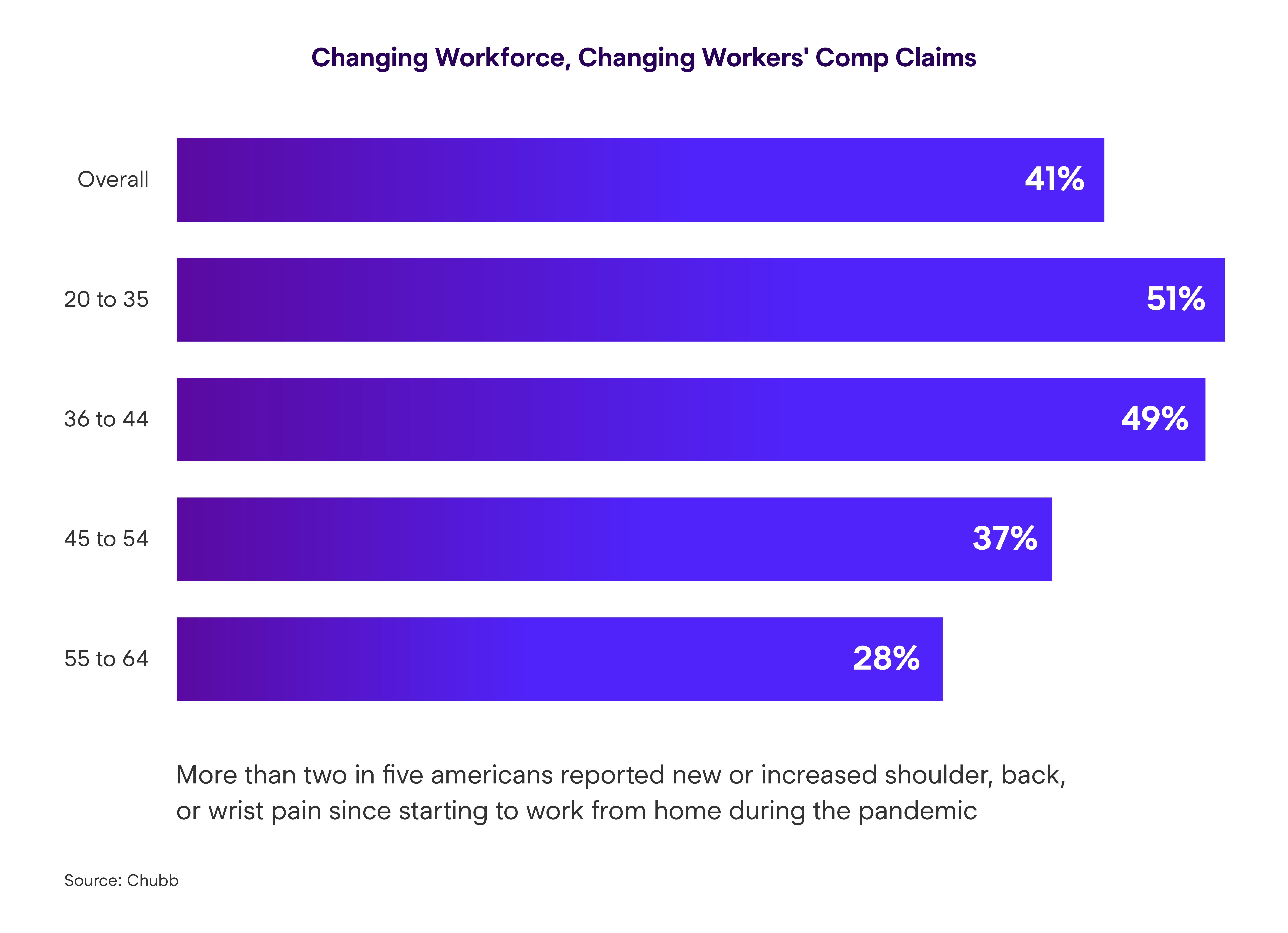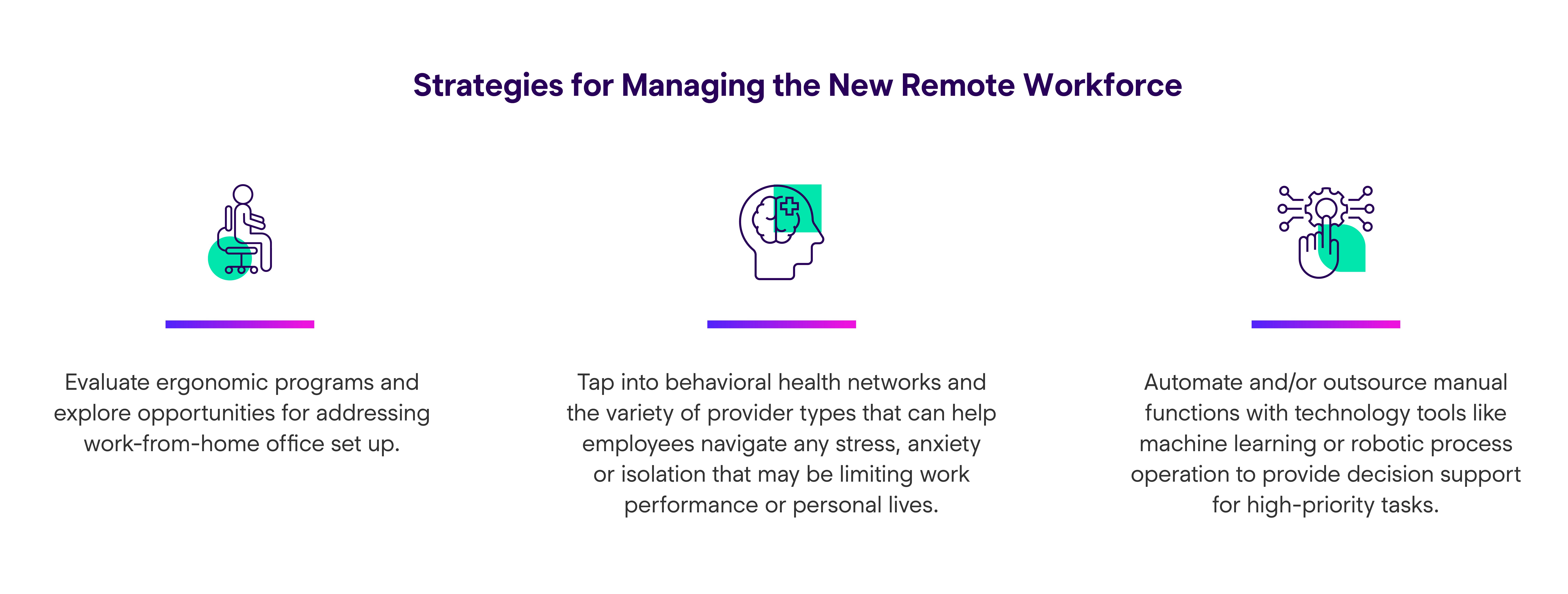Strategies for Adapting to an Evolving Workforce
As a result of the pandemic, employee norms around work are changing and impacting the property and casualty workforce in diverse ways. Many are choosing to change jobs or careers altogether (aka the “Great Resignation”), large numbers of insurance professionals are retiring, substantially changing the workforce demographics (as much as 50% in some cases–read more in Managing Social Inflation in a Talent Crisis), and a majority have permanently shifted to remote work either some or all of the time. Prior to 2020 less than 10% of the professional workforce worked from home all or most of the time, and while some experts put remote work at more than 70% during the peak of the pandemic, today, it seems we have normalized with approximately 60% now working primarily from home.
The move to remote work brought unanticipated changes to how we live and work. With shorter commutes and more time with family (and sweatpants), the collective shift has substantially changed how we think about employee wellness, how our teams connect and how we get work done. This has been a significant shift in the claims adjusting environment. Many industry executives are dealing with how to ensure the benefits of face-to-face collaboration in office locations doesn’t disappear as the next generation of adjusters enter the workforce remotely. With three years of experience transitioning from office to home to hybrid, business leaders have largely moved on from debating the productivity of remote employees, and instead are wondering how to cultivate culture and connection, maintain health and wellness and ensure a positive employee experience in what appears to be a permanently distributed workforce.
While a majority of research points clearly to employees’ preference to work from home all or some of the time, these changes are having both physical and mental impacts on workers. Given that some individuals moved from an office environment to their dining room tables, it may not be surprising that the rate of shoulder, back and wrist pain are on the rise. A study conducted by Chubb indicated more than 40% of Americans surveyed reported new or increased shoulder, back and wrist pain since they began working from home (see figure above). The largest uptick in pain was reported by those in the 20–35-year-old age bracket.
With ergonomic injuries potentially representing a larger proportion of the workers’ comp claims mix in the coming years, it’s important for employers to think about prevention strategies and evaluate programs to address home office setup and employee well-being.
In addition to addressing physical concerns, there are significant mental health implications as well. The World Health Organization has reported a 25% increase in the prevalence of depression and anxiety worldwide, largely attributed to employees transitioning to work from home environments. In many cases they worked longer hours, while exercising and communicating with others less. According to a 2021 study conducted by the American Psychological Association, 79% of employees experienced work-related stress, and nearly 3 in 5 employees reported negative impacts from it, including lack of interest, motivation or energy and lack of effort at work. Now that employees have adjusted to a work-from-home lifestyle, 72% report a different outlook on work-life balance, focusing more on their mental well-being. This has significant implications on what employees expect from their work experience.
With employees spending less time together, employers have to provide a different work experience than in years past, enabling new ways for employees to learn, engage and collaborate with each other. Deloitte reports that “companies who score high in providing a great work experience for their employees are as much as 25% more profitable than those who don’t.” While big technology companies like Meta, Microsoft or Nvidia are working on next generation collaboration tools to keep employees engaged with each other, partners in the P&C industry are focused on leveraging employees’ talents by automating manual tasks and surfacing the work and the data that workers’ need most. Claims processing systems equipped with machine learning, decision-support systems and robotic process automation not only improve efficiency for claims organizations, they allow employees to spend time where it makes the most difference, and they make onboarding and training new claims professionals easier, with modern tools that new generations of employees expect.
Given that the shift to remote or hybrid work has evolved to a more permanent state, companies need to establish new best practices when it comes to mental and physical well-being initiatives, and the tools and technology that create a new, better employee experience. These are all items that are top-of-mind for industry executives as we navigate what is next in professional environments.



